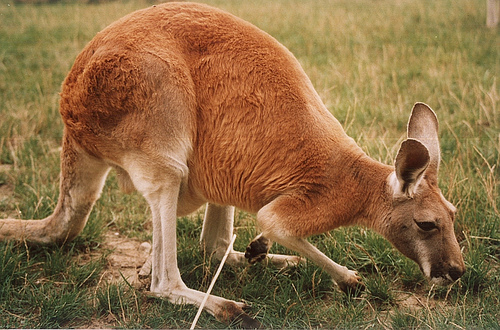Facts About Red (Plains) Kangaroo
The red kangaroo, often referred to as the red giant kangaroo, holds the distinction of being the largest land mammal native to Australia and is the largest living marsupial worldwide. These iconic creatures are widely distributed across mainland Australia, although they tend to avoid the more fertile regions.
First described in 1822, the red kangaroo has undergone considerable taxonomic revision, especially with the advent of genetic studies. Males and females are sexually dimorphic: males exhibit a striking red-brown coat, while females are generally smaller with blue-grey fur. Their bodies are optimized for hopping, with males capable of achieving impressive heights and distances.
Red kangaroos inhabit the western and central parts of Australia, thriving in diverse environments such as scrublands, grasslands, and deserts. They are well-adapted to arid conditions, efficiently conserving water and preferring green vegetation in their diet. Socially, they live in groups known as mobs, and during mating season, males often engage in boxing matches for the attention of females. Red kangaroo reproduction is particularly remarkable, with females capable of supporting several offspring at different developmental stages simultaneously through a process known as embryonic diapause.
When it comes to interactions with humans, red kangaroos have had a mixed relationship. Agricultural activities have sometimes benefited them by providing additional food sources, but they also face competition from livestock and are hunted in some areas. They are sometimes considered pests and may be culled, especially when they cause road accidents by bounding in front of vehicles. On the commercial side, red kangaroos are harvested for their meat and hides under strict management plans. This industry is a subject of debate but plays a significant role in Australia's economy.
